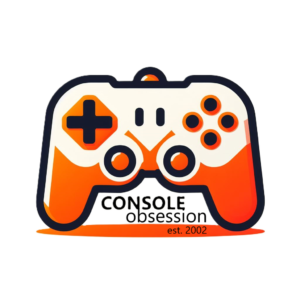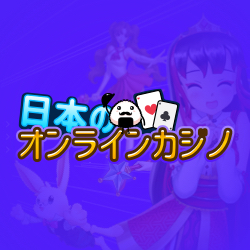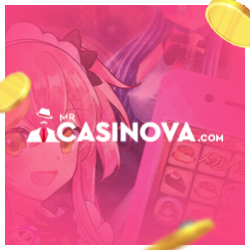Ninja Gaiden: Dragon Sword DS Review
Pirates versus Ninjas, come on, lets face it. Ninjas would kick the snot out of the rum swilling fools, especially when they’ve got Ryu Hayabusa on their side. Dragon Sword katana, check, throwing stars, check, skin tight ninja getup………erm……..check. Well, I guess friction is the ninja’s greatest enemy. Since the Super Ninja’s return to home consoles in 2004 on the Xbox, Ryu has been handing out ass left right and centre, and now he’s whooping some up in a nice portable package. Yup, Ninja Gaiden has hit the DS and there’s not a mini-game in sight, hooray!
Ninja Gaiden: Dragon Sword is an action adventure which picks up where Ninja Gaiden on the Xbox left off. While fans of the series may notice some of the same characters and locations in Dragon Sword, it merely gives you a sense of familiarity instead of receptiveness. Set six months after these events, Ryu Hayabusa has rebuilt the Hayabusa Village. When fellow villager and kunoichi, Momiji, is kidnapped by the Black Spider Ninja Clan, he is forced to find her, while uncovering the secrets behind the mysterious Dark Dragonstones and their relation to the Dragon Lineage. Yeah, the story is nothing to be blowing the whistle about but it works and is very well presented through gorgeous comic book stills. The artwork is just beautiful and makes superb use of the dual screens, words don’t do it justice. It’s worth noting that this was also Team Ninja’s only opportunity to display their signature “huge breasts”, courtesy of semi-nude demi-god fiends. Go figure.
The game is presented in a 3rd person, pseudo-3D manner, meaning all the game-models are rendered in full 3D, but the world the player travels around in is pre-rendered. Think Resident Evil and you’ll know what I mean. When played, the DS is held sideways, as in Hotel Dusk: Room 215 and Teenage Zombies (*shudder*). The left screen shows the area map, while the right displays the main gameplay, when set for right-handed play, and reverse when set for left handed play. The game is almost fully touch screen driven, with all actions and combat carried out through drawing different gestures on the screen. Blocking is achieved however through pressing any button on the DS, so you can find your own comfortable playing position. Now, considering the nature of the combat, fast paced hacking and slashing, you would be forgiven for thinking, “touch screen controls! Pah! What tripe!”. However, this is not the case as the controls in Dragon Sword are some of the most responsive and intuitive I’ve seen on the DS.
Movement is easily done by clicking a location on screen, jumping by flicking up on Ryu, ranged weapons by clicking enemies and attacking with the sword by drawing lines through them. It actually reminds me of a PC title called Silver which employed a similar system, but used mouse gestures to execute combat moves. Various special moves are learned throughout the game, there’s nothing like the complex library of moves from the bigger consoles, but there’s still enough. The Flying Swallow, the Izuna Drop and various other signature moves are present as well as the awesome Ultimate Technique (where you franticly scribble on the screen) which gets boosted by the souls of fallen enemies. While the DS is not capable of flinging huge numbers of enemies at you, the 5 to 6 it does are often constantly re-spawned during epic battles creating very intense and involving fights.
You must pay attention to your enemies to out manoeuvre, then strike at the right time. Dragon Sword like its older brothers is all about frantic, well timed thoughtful combat and is anything but shallow. The other aspect of combat is the ninpo magic, which involves tracing kanji symbols (renamed to Sankrit to be more culture–neutral outside of Japan) to unleash powerful spells and effects. Drawing the symbols is not difficult but it gives you a time limit, which is reduced at higher difficultly levels. They are often used in the basic puzzle solving elements of the game as well. The only gripe I have with the combat is that at times Ryu becomes quite small due to the camera location and perspective. It makes drawing and pulling off the exact moves that you want a little tricky and can be the source of much frustration. However, luring enemies back to the camera so you can see what’s going on can help. Having said that, I forgive Dragon Sword as this is a common problem with games employing this playing angle.
Bosses in the game are massive, impressive and imaginatively designed. All too often however, once you’ve discovered the pattern to kill them, they become remarkably easy, with the exception of a few. Yes, Dragon Sword is not the brutal pounding that its big console brethren offer but this was never the goal of the creator Tomonobu Itagaki. His main goal was to create a game that can be played by all gamers everywhere, saying that his other titles “have traditionally targeted men above the age 18 and Westerners.” Not everyone will want to be bested constantly by the first boss for hours until perfecting their attacks. Sure, Dragon Sword is now easier, as well as being blood and gore free but it doesn’t suffer for it. Playing as Ryu is a great experience, jumping about the screen slaughtering hordes of enemies is ludicrously good fun.
There are plenty of secrets to be found in the game and hidden challenges. Wooden talismans can be found to unlock new features by completing secret stages, accessing the Netherworld or by defeating the “Sea Swallow”. The latter being a really fun aspect to the game where you have to listen for the chirp of the Sea Swallow. You can’t see it but you can coax it out of hiding by whistling into the mic or by throwing objects. Harder difficulties can be unlocked by completing the game, scaling all the way to Master Ninja difficultly. I’m playing on Head Ninja currently, and let me tell you, it’s a lot harder, A LOT. I suspect that Master Ninja will make most grown men cry and Ninja Gaiden fans revel in glee.
I’ve already spoken about the presentation of the game, but it really is remarkable. The artwork throughout the game is beautifully drawn and the 3D rendering is the most impressive I’ve seen on the DS. There is even a section of the game where the camera takes a true 3rd person position, and everything is rendered in 3D. Sure it was only for a minute stretch, down a forested straight path killing bad guys and dodging boulders, but it was awesomely implemented. The pre-rendered backgrounds look fantastic, with vastly varied level locations and colour palettes as well as different enemies correlating to the specific level.
Sound and music is also very well presented with the music adding vastly to the atmosphere and the sound effects being chunky and solid in the right places. It really is a treat for your ears and I highly recommend playing with headphones or you’ll be missing out on one of the finest aural experiences you can have with a DS.
The only really niggling point that can be made about Dragon Sword is that it’s short. Clocking in at only 6 hours on my first play through on Normal it’s not even a weekend long game. Having said this, the higher difficulty levels provide a real challenge and the secrets are worth playing for. If you’re looking for a game that’s going to engage you for 20hrs+ you’re looking in the wrong place. However, if you’re looking for one of the finest action adventures on the DS, welcome have a seat. Sure, it’s a short experience, but it’s pure gaming bliss for the duration. The refreshing use of the DS’s graphical capabilities and touch screen controls is a real marvel and is something I hope we can see more of in the DS’s future. Dragon Sword should be a real lesson to the developers spitting out half-hearted titles with tacked on mini-games. Sure it’s not perfect, but this is a stunning example of how action adventures should be done on the DS. And if you pirates think any different, you’ll end up with a shuriken in your eye.
8/10







